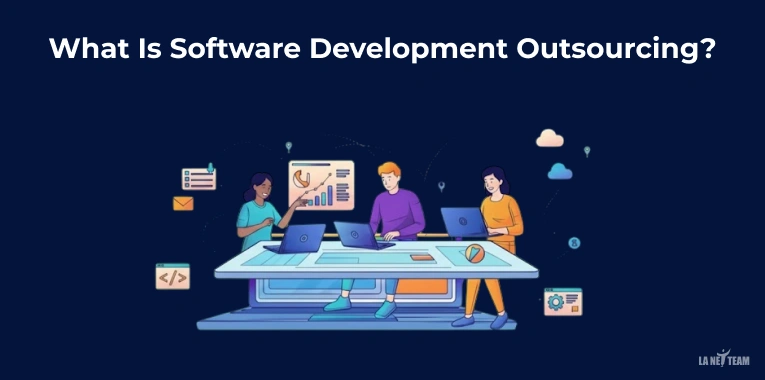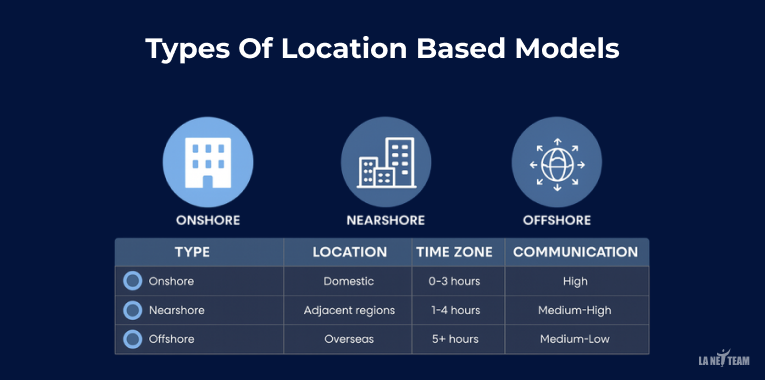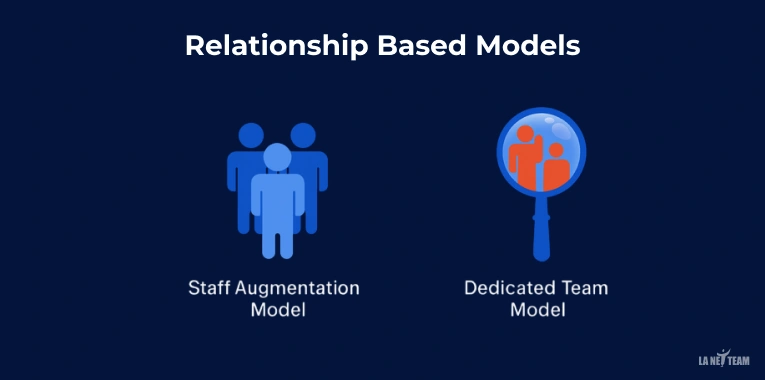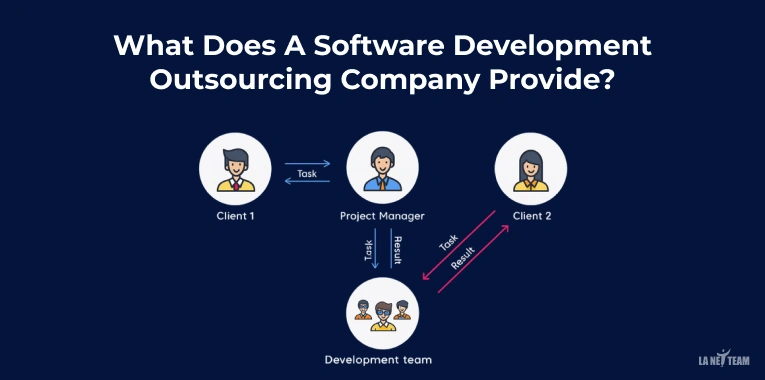Every business wants great software…. But not every business can build it in-house.
That’s where Software development outsourcing helps you…. by hiring an external team to build or manage software instead of doing it all in-house.
Initially, many business owners were concerned about the safety of outsourcing their projects to an outside team. But once they tried it, the results convinced them.
In fact, a recent study by Deloitte revealed that more than 70% of companies outsource their work. To improve efficiency and remain competitive.
What Is Software Development Outsourcing?

Software Development Outsourcing means hiring another team or company. To build or manage your software without doing it all in-house. By outsourcing, you get to work with experts who have skills, tools, and proven methods to handle tough tech projects.
Why do companies need to outsource?
- They lack the necessary in-house experts.
- Their teams are already overloaded with work.
- Or, they just can’t find the right talent outside.
WhatsApp Example
At the time when WhatsApp was a small company. Most of their app development was outsourced by its founders to Eastern European engineers. This plan assisted them in reducing the price without reducing the quality.
The result? WhatsApp became one of the most downloaded apps in the world. Additionally, it was later purchased by Facebook for $19 billion.
As per the recent data, the IT outsourcing market is expected to grow from $617 billion in 2024 to $800 billion by 2029.
Types of Software Development Outsourcing?
It is divided into 3 main categories:
1. Location-based models:
Location-based models are about selecting a team that is located in a region that fits perfectly for your project. This type of outsourcing is further divided into 3 main types:

Onshore outsourcing: Partnering with a vendor within the same country.
Why it works:
- Same time zone, making communication easier.
- No language or cultural barriers
- Quick response times
Nearshore outsourcing: Outsourcing to a company in a nearby country, often in a similar time zone.
Why it works:
- Similar work culture and business practices.
- Shorter time zone differences for smoother communication.
- More affordable than onshore, but still relatively close.
Offshore outsourcing: Outsourcing to a distant country, typically to save costs.
Why it works:
- Significant cost savings.
- Access to a large talent pool in countries with booming tech industries (e.g., India, China, Ukraine).
2. Relationship-based models:

Relationship-based model focuses on how the external team works with your business. There are two primary relationship models:
- Managed teams: External team is a team that works on your project but in independent way, yet in a way that fits the business requirements.
- Staff Augmentation: External developers work alongside your in-house team, following your processes and workflows.
3. Contract-based models:
Contract-based type of software outsourcing defines how payment and contracts are structured.
- Project-based outsourcing: Over here, you outsource a specific project with a specific start and end date. The external team handles everything from planning to delivery.
- Resource-based outsourcing: You outsource (to an external specialist such as a developer or a designer) on an hourly or daily basis. This gives you the freedom to upscale or downscale as required.
What are the Models of Outsourcing Software Development?
Quick Comparison Of Models
| Models | Control Level | Best for | Management |
|---|---|---|---|
| Staff Augmentation | High | Filling a specific skills gap | Internal |
| Software Projects | Low | Short-term, defined tasks | External |
| Outsourcing Consultation | N/A | Companies new to outsourcing or scaling carefully | External (Consultants) |
| Hybrid Models | Custom | Flexible, customized needs | Varies |
1. Staff Augmentation:
Staff Augmentation is the act of recruiting additional assistance to your internal personnel. To put it in simple terms, you contract independent developers who currently collaborate with your team. It is ideal when you require the necessary skills or an extra hand to a shorter-term project.
Why it works:
- Quick onboarding without hiring delays.
- You get full control over the projects and workflow.
- Get access to specialized skills that you don’t have in-house.
2. Software projects
This type of model is where you outsource full project development. In this external team handles everything from start to finish. The software project model is perfect if you don’t have an internal dev team or want an end-to-end solution.
Why it works:
- Clear cost and timeline upfront.
- Constant communication and transparency.
- Full project ownership from the external team.
3. Outsourcing Consultation
If you’re new to outsourcing or unsure where to start, the outsourcing consultation model is a great choice. In this model, experts guide you on how to make the best outsourcing decisions. And also, helps you avoid common mistakes.Why it works:
Why it works:
- Helps you figure out if outsourcing is right for you.
- Helps companies looking to scale without costly mistakes.
4. Hybrid Models
The hybrid model is about mixing and matching different models to fit your needs.
For example, you could have one company that takes up a special project, a small in-person team that does maintenance and outsources all the other functions.
Why it works:
- Gives maximum flexibility to choose.
- Help manage costs efficiently.
- Reduces risk by spreading responsibilities.
What Does A Software Development Outsourcing Company Provide?

A good outsourcing partner acts as the extension of your own team. Trusted companies like La Net team software help you like your extended team member.
They are well known for understanding and helping solve real problems that will 100% WORK for your business.
Let’s see how these companies make your work easy:
- End-to-end Development
From brainstorming your idea to launching the final product, they help you at every step. - Instant access to experts
Get skilled developers, designers, and testers without the hassle of hiring or training new people yourself. - Cost saving
Reduce your spending on recruitment, onboarding, and office setup. Pay only for what you need, when you need it. - Quick Turnaround
With the help of dedicated teams, projects get completed quickly. - Ongoing care and service
They don’t leave after your product goes live. Instead, they continue to support you with updates, ongoing maintenance, and improvements as your needs grow and change over time. - Smart tech direction
Not sure which technology is right for you? They recommend the best tools and strategies for your goals.
Let’s Wrap It UP
Building software outsourcing the right way solves real business challenges.
It is not possible to simply give a project and hope that it will work out well… You have to have the correct model, the correct team, and the correct processes.
It is not only about outsourcing work at the end of the day, but finding solutions that will see your business grow, increase in size, and operate efficiently.
Right partner + right model + right expertise = really working outsourcing.
